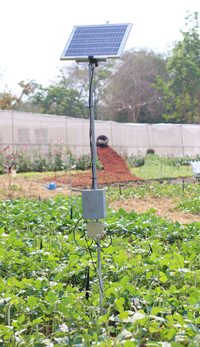11 June 2018
Figures on global data availability and growth are staggering. Data are expected to grow by an astounding factor of 300 between 2005 and 2020, and are predicted to reach 40 trillion bytes by 2020. This creates significant opportunities for data-based decision-making in industries such as agriculture.
Indeed, ongoing developments in precision agriculture and web-based apps can help the farmer to greatly enhance their efficiency, productivity and sustainability, and to prepare themselves for potentially catastrophic climatic events in real time.
On the other hand, farmers have traditionally relied on a more conventional approach for monitoring and improving their performance, namely, benchmarking. In a nutshell, benchmarking is about comparing one’s performance to that of their peers in terms of one or more performance indicators, typically expressed as ratios – i.e. output over input.

For instance, a dairy farmer may want to know how far their milk production per cow is from the top 10% of farms, or whether farms with a different management strategy than theirs (e.g. pasture-based farm vs. all-year housed system) could deliver higher milk yields. Farm benchmarking reports are standard practice in agricultural extension and consultancy.
However, these reports can be overly simplistic, because partial performance ratios cannot capture the multifaceted nature of agricultural sustainability, encompassing environmental (e.g. carbon footprints), social (e.g. labour use) and other indicators (e.g. animal health and welfare), in addition to economic and technical ones.

Smart farms mean smarter analysis
The increasing volume of farm data that farm advisors are currently sourcing on all sustainability aspects can help to obtain invaluable insights into ways of improving farm sustainability and to translate these insights into practice. But we need to go beyond simple performance indicators and conventional benchmarking, towards advanced analytics methods that can benchmark farms by simultaneously processing large numbers of indicators and amounts of data.
A potential game-changer is the multivariate method data envelopment analysis (DEA) – a mathematical tool stemming from the fields of economics, management and operational research. The advantages of DEA for farm benchmarking have long been recognised in agricultural research, where hundreds of studies exist. But very few efforts have been made to establish DEA in practice as a powerful analytics tool in the agricultural industry.
My colleagues and I attempt to make a case for the use of DEA by farm advisors in a new report (Pdf link). The report demonstrates DEA step-by-step and provides examples with real farm data of how the advisor could use it to detect efficiency trends over time and across regions or farming systems, and to identify profit-making and cost-reducing opportunities for farmers. Outcomes of the report that I presented at the SCI Agrisciences Group meeting on 22 May 2018 were well-received by industry members of the group.
Benchmarking with DEA is just one example of how data and analytics can help improve the sustainability of the agricultural industry. Similarly, data science in agriculture is just one instance of the exciting things that we, in the SCI Agrisciences Group, are actively concerned with for making a positive change to society.

|
Dr Andreas Soteriades Member of the SCI Agrisciences Group Researcher at University of Bangor’s School of Environment, Natural Resources and Geography |
Related links:
- Agrisciences Group
- Event: SCI Young Researchers in Crop Sciences 2018
- Andreas' paper (Pdf)
